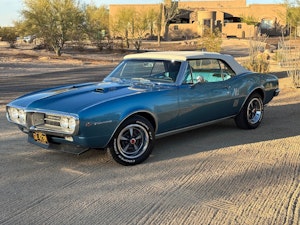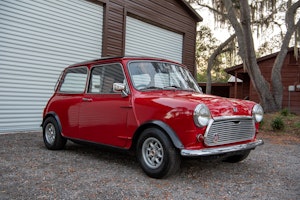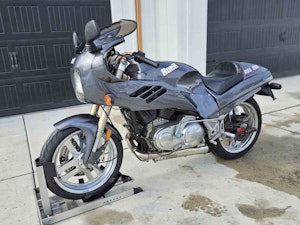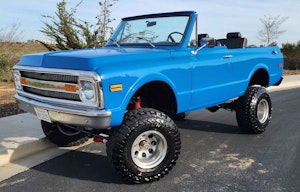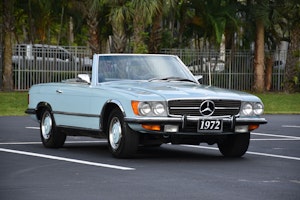Media | Articles
The Chevrolet Nomad was the fancy wagon we all deserved
Car guys, real ones at least, hold some sort of strange fascination with the station wagon. Maybe it’s because we all grew up peering out the roof windows of a 1971 Oldsmobile Vista Cruiser. Maybe because some are still baffled that the terms “SUV” and “crossover” somehow made it into English lexicon. But maybe, being able to haul at both ends really factors into our car-collecting desires. How about a Corvette-based wagon?
If the Chevrolet Nomad had entered the world mewling and screaming just like it should have, we might’ve seen that. But even the production version, the decidedly not-Corvette-based variant, became one of the most famous wagons ever built.
Barely had that first Corvette itself been introduced in 1953 that GM stylists, under the rule of Harley Earl, started playing around with the formula. What was even more European than a two-seat sports car? How about a two-seat, sports car wagon? Someone at the design studio must have remembered: The Brits call ‘em shooting brakes. A year later, at GM’s Motorama, came the Nomad. It was one of GM’s Chief Designer Harley Earl’s “dream cars.” And it looked much like how you would expect a Corvette shooting brake to look: the front of a Corvette, the back of a sleek, yet practical wagon, and the capacity to carry six people inside – an automotive swiss army knife.
The Nomad joined the fastback Corvette Corvair concept onstage. Both were fitted with Corvette running gear: namely an inline-six producing 150 horsepower, with a two-speed Powerglide. Like all Corvettes, the body was made from fiberglass. The rear glass folded into the tailgate at the push of a button. Inside, blue and white leather dominated, and the rear seats folded down. “Although resembling a Corvette, and in fact using many Corvette components,” writes Bill Bowman for the GM Heritage Center, “the Nomad was built on a modified 1953 Chevrolet sedan chassis.”
Remember, those first Corvettes didn’t sell very well. Only hindsight can illuminate whether an authentic Corvette-based Nomad could have changed the course of its history. Certainly people have sunk vast fortunes into imagining this sort of thing. But Earl loved the concept so much that when the production version rolled out, atop the chassis of the 1955 Chevrolet lineup, not only the name made it in but so did a smattering of styling cues: note the B-pillar of the 1955 Nomad, and the rear chrome spears on the tailgate: “truly a revolution in the rear!” said a 1955 brochure. “True sportsman’s flair!” it continued: “and at no loss to Chevrolet’s utility features! Inspired by the show car that thrilled millions!”
Marketplace
Buy and sell classics with confidence
The Nomad arrived just in time to line up with the most famous Chevrolets ever built: the Tri-Five models, not just a midsize lineup but an icon for an entire decade. Maybe that’s why it’s popular, a rising tide and all that. “The Hot One” really did transform Chevrolet in 1955: smooth, clean styling still packed enough flourish to keep things suitably interesting for the Fifties. And with concept-car tricks, the Nomad rose to the top.
Chevrolet’s small-block V-8 sat under the hood, of course, and it was the only engine available on such high a trim. Initially, you got a 265-cid V-8, which eventually became a 283 cubic inch beast by 1957. By then you could honestly tell people your Chevy hauls both cargo and ass. V-8-powered station wagon owners tend to use that line freely.
The Nomad continued as a Chevrolet nameplate all the way until 1972. It received updates nearly every year, matching every changing model in the company’s lineup, even surviving a size increase to the Impala in 1959. No more Bel Air. To paint a picture of a pre-SUV universe, you could conceivably walk into a Chevrolet showroom that year and pick up one of five station wagons: Nomad, Kingswood, Parkwood, and Brookwood, the latter in two- and four-door versions. All befitting one’s, well, station in life.
Yes, there were always other Chevrolet wagons. They carried names such as the Bel Air Beauville, which was a fancy four-doored creation, and the plebeian Townsman and Handyman. But the Nomad had always been on top.
Until 1968, anyway, when it went from the highest trim level to the lowest. Now it was the Chevelle Nomad, and it soldiered on until 1972, as ordinary as could be, even lacking an SS badge to warm it up (except in 1973).
Things get even murkier after this. In 1976, the Vega Nomad debuted, with a forward-leaning B-pillar to kind of drive the point home. One was recently exhibited at the 2011 Concours d’Lemons, which seems fitting for any Vega. A year later, surviving into the Eighties, the Nomad became a trim on the Chevrolet Van, which became a jack-of-all-trades sort of van, the kind we don’t see anymore: both five-passenger seating and the cargo room to haul motorcycles and snowmobiles. It also included two-tone paint, hardly any windows, and occasionally included a folding bed. Finally—a Nomad for true nomads.
Retro fever hasn’t stopped General Motors from trying to resurrect the Nomad, however. In 1999, at the Detroit Auto Show, GM unveiled a slavishly retro Nomad based on a Camaro F-Body chassis, with a 5.7-liter LS1 V-8. Five years later, GM introduced a far cleaner and more handsomely styled Nomad, resembling more of that original Corvette concept than the ’50s dreamboat – this time on the Kappa platform, the same underpinning the two-seat Pontiac Solstice and Saturn Sky sports cars. Half the cylinders, sure, but all the style. Naturally, old GM being what it was, neither made it into production.
Of course, if a Corvette shooting brake is really your bag, you can always page Reeves Callaway on your Motorola and try to sweet-talk your way into a discount on an Aerowagon.

